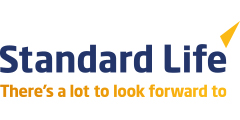Headlines
- Platform providers aim to empower advisors to have the right investments and make the right decisions through technology.
- Technological development of platforms & platform offerings are not all the same and functionality is a differentiator for managers and advisors. Emerging focus of development is on financial planning tools and online CRM and client service for Advisers, and more recently, making a difference to the end-investor with USP features (see next point).
- Platform systems can be programmed and tailored to investor needs e.g. pre-set substitutions of portfolio, automated tax harvesting & automated tax allowance movements from GIA to ISA.
- Platforms are facilitating the value chain and should not be considered just a commodity slice of costs. There is heated debate on the share of the overall charges across advisers, platforms and managers.
- Regulation & tax is a major part of the financial services landscape. Technology can be used as an enabler for regulatory & tax compliance.
- When determining what platform solution is right for individual firms there are three core choices. Either: Build, Buy or Rent.
Key challenges
Fractional dealing
- Fractional dealing is more relevant than ever. Significant increase in demand for ETFs likely to continue to increase with MIFID II cost transparency rules driving investors to cheaper options. However, there are limited numbers of platforms that can support fractional dealing currently.
Data feeds and MI
- Data feeds and the flow of data are an important consideration for clients. Regulatory requirements such as MIFID II mean live data and MI become important factors when using platforms.
- There are restrictions on how much data can be sent due to contractual relationships.
Bespoke platform offerings
- Managers are generally looking for platforms to support more bespoke offerings. ESG & CGT are in the forefront of investment strategy and packaged discretionary services are growing in demand over investment advice. Managers want to present an investment proposition unique to them with flexibility at investor level - this is a challenge to handle these bespoke requirements.
- Suitability reporting and full cost disclosures have driven additional requirements of platforms and firms utilizing platforms.
The cost of platform trading:
- The pressures to reduce cost at all levels is prevalent. Many institutions that provide platforms are running at a loss or very small margins - less than half of platform providers are making money.
- Platform providers benefit when they are also an asset manager, benefitting from the distribution, however the platform needs to still be impartial. Platforms need a critical mass of assets to make them viable and in the UK there still needs to be some consolidation.
- The Australian model is one to watch though there are differences in investment/wrapper offerings that mean the functionality is not so extensive. Investor charges in Australia have reduced from 40 to 4 bps and the number of platforms has shrunk to single figures.
- In UK the end investor pays end-to-end costs. Is this a morally right model? Should investors bear costs of advice, platform and manager or should managers and advisers pay to use/be on platform?
Platform interoperability, competition & standards
- Increased competition is generally seen as a good thing as it should decrease costs and improve offerings, with weaker platforms falling away.
- There are general challenges with platforms working together. Ease and demand for testing transfer of assets in is supported, but no one is willing to test transfer out.
- Some platforms take months to transfer positions out and it is usually too costly to consider.
- A big complaint for clients is not receiving their income on time and some platforms make this easier than others.
- Omnibus account structures and ringfencing rules are not standardised across platforms which means that you have to hold assets across multiple platforms.
Conclusions
The Future of platforms
- It should be an easier and less costly process for clients to make choice of platform and movements of assets.
- US platforms are owned by custodians and they bear the brunt of costs, could this be a model the UK follows?
- Brexit is in the forefront of thinking with concerns for clients regarding where their assets will be domiciled in the future.
- Movement of assets offshore e.g. Dublin has taken place with many taking a CGT hit now rather than later when tax rises come into place.
- There is currently a spread for platforms regarding profits vs investment. Due to the cost of running platforms, at what point will players consolidate? Commercial viability will be tested by Boards regarding allocation of the level of investment required to sustain a platform.
- Basic platforms will continue to struggle to be profitable. Instead, feature-rich platforms will sweep up the business.
Expert: Jenny Davidson, Head of Platform Enabled Investment Proposition, Standard Life
Facilitator: Gilly Green, Sionic



